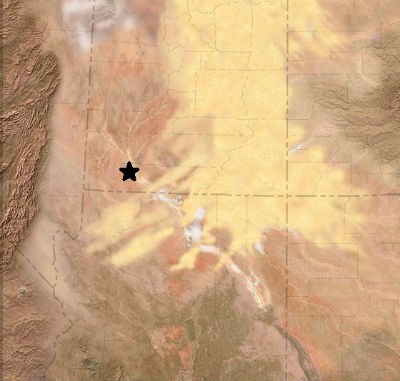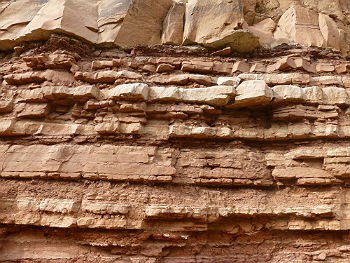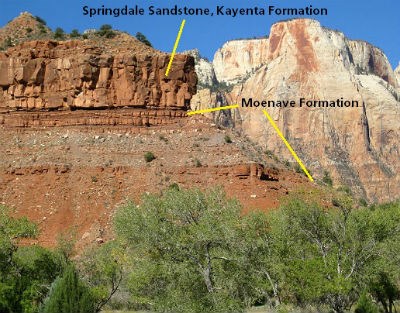
Paleogeographic map courtesy of Ron Blakey, Colorado Plateau Geosystems, Inc. 
NPS photo/Adrienne Fitzgerald Late Triassic-Early Jurassic
~210–195 million years ago
The Moenave Formation is visible in lower Zion Canyon as the steep, easily eroded, reddish hillside leading up to the cliff band of the Springdale Sandstone. Good exposures can also be seen along the Kolob Canyons Scenic Drive.

NPS photo/David Tarailo, Geologist-In-the-Park Learn more about the dinosaur tracks found in the Moenave Formation
Return to the main Rock Layers page
|
Last updated: July 6, 2015
